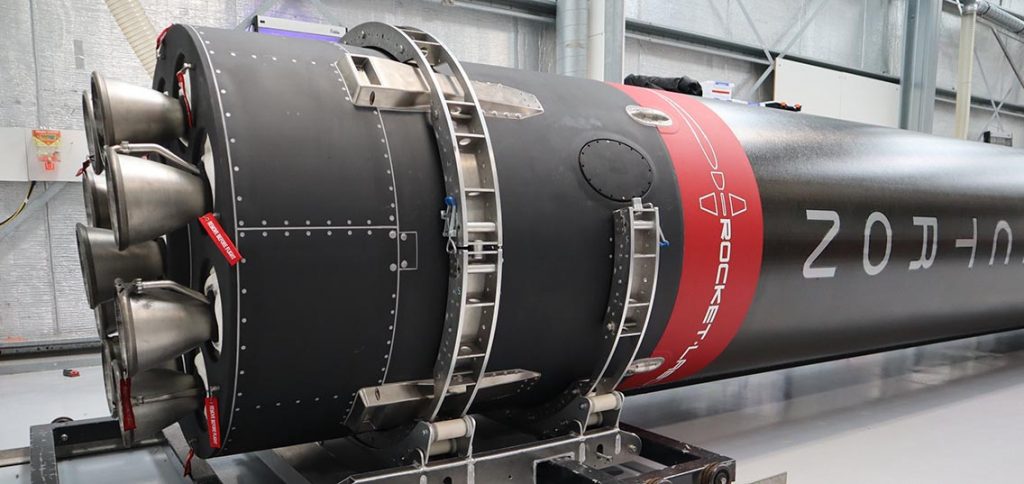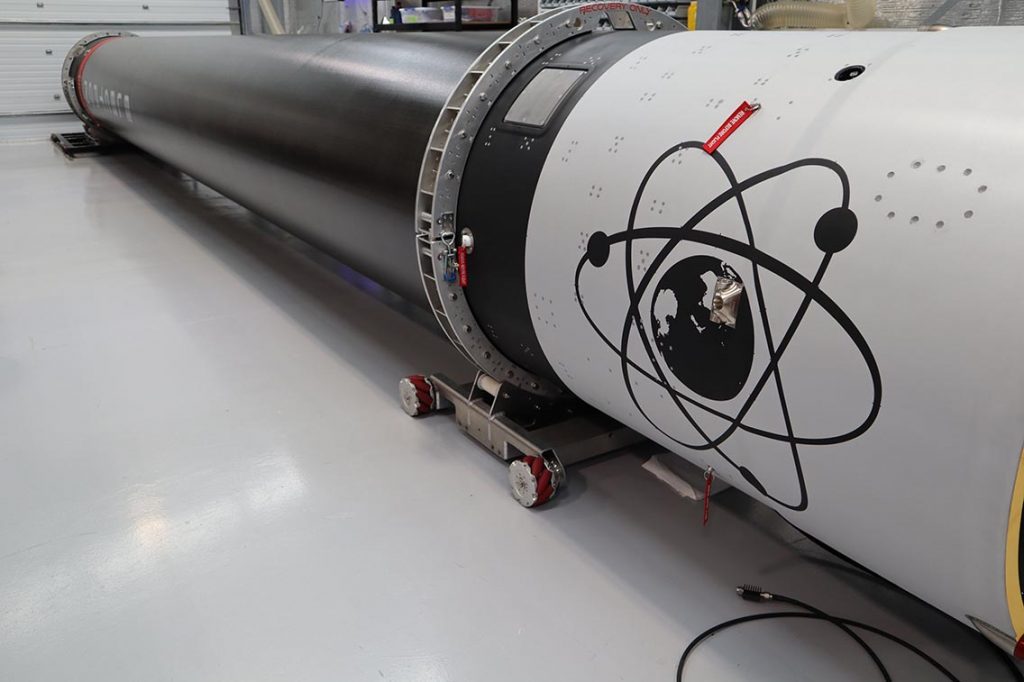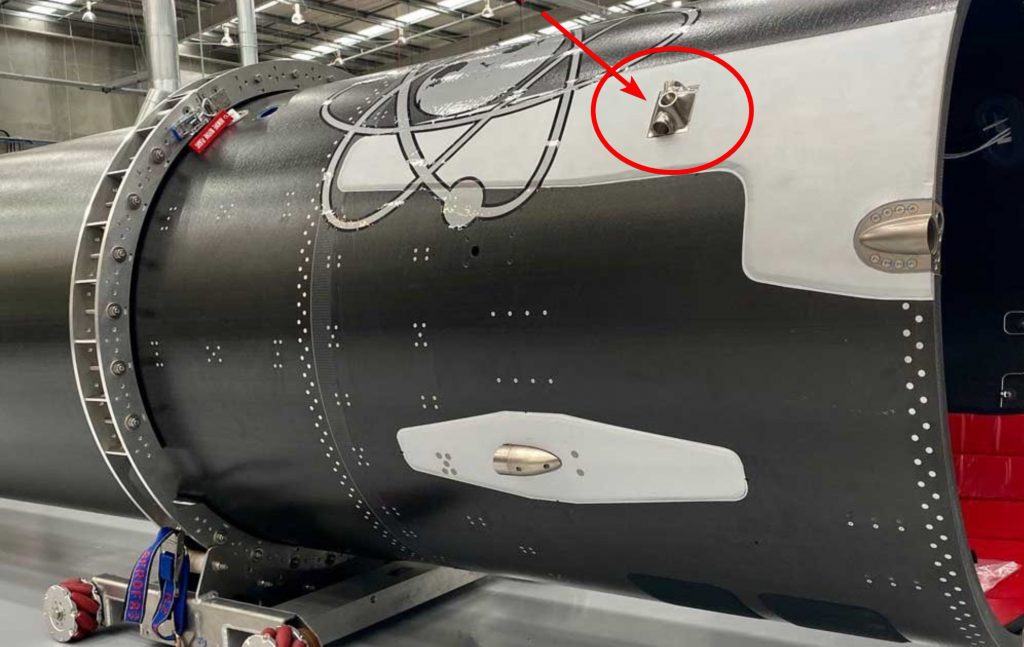4.11.2020
Rocket lab to launch student-built 'waka' satellite in 'most diverse mission yet'

New Zealand-founded space company Rocket Lab’s next mission will carry 30 payloads into orbit including a “waka” satellite made by New Zealand students who are trying to predict earthquakes.
The mission will lift-off from Rocket Lab’s launch site on the Māhia Peninsula during a 14-day launch window that opens on November 16. It will be Rocket Lab’s sixteenth launch using its 18-metre rocket called Electron.
The satellites belong to customers including Te Pūnaha Ātea - Auckland Space Institute, TriSept, Unseenlabs, Swarm Technologies, and Gabe Newell, co-founder of global gaming software company Valve.
The satellites will ride on Electron but each will be deployed to a unique orbit, about 500 kilometres altitude, courtesy of Rocket Lab’s Kick Stage.
The Kick Stage is designed to deliver small satellites to precise orbits, before re-entering the atmosphere and burning up.
Once Electron reaches orbit, the Kick Stage separates and conducts the final leg of the journey. It uses a cold gas reaction to position itself and deploy satellites.
After all payloads are deployed, the Kick Stage reignites its engine one last time to perform a “de-orbit manoeuvre”.
Kick Stage’s ability to burn up as it re-enters the atmosphere is touted as a solution to the increasing problem of mounting space junk, an issue which came to the fore last month when two large pieces of space debris came uncomfortably close to colliding.
Such an event could create tens of thousands of pieces of debris that could litter space for decades, if not centuries, making it harder to send objects into orbit.
Rocket Lab founder and chief executive Peter Beck said he was excited to provide tailored orbits for satellites on the mission.
“It’s why we created the Kick Stage to enable custom orbits on every mission, and eliminate the added complexity, time, and cost of having to develop your own spacecraft propulsion or using a third-party space tug.”
One of the payloads, the Waka Āmiorangi Aotearoa APSS-1 satellite, was built by University of Auckland student at Te Pūnaha Ātea - Auckland Space Institute.
It is designed to monitor electrical activity in Earth’s upper atmosphere to test whether ionospheric disturbances might be linked to earthquakes.
The data from the mission will deliver deeper knowledge of hard-to-access altitudes and drive understanding of how phenomena such as solar wind and geophysical events affect atmosphere.
A “mass simulator” will also be fixed to this mission’s Kick Stage in the form of a 3D printed garden gnome created for video game developer Gabe Newell’s company Valve.
Mass simulators are used to test various configurations and basic size, load, and handling characteristics of rocket launch vehicles, according to Wikipedia.
The mission aimed to test and qualify a novel 3D printing technique that could be employed for future spacecraft components, Rocket Lab said.
It also served as a “homage to the innovation and creativity of gamers worldwide”, it said.
The titanium gnome was created by Weta Workshop and was intended ot replicate a character called Gnome Chompski in Valve’s Half-Life video game.
The 150mm gnome will remain attached to the Kick Stage throughout the mission and will burn up upon re-entry into Earth’s atmosphere.
For every person who watches the launch online, Newell will donate $1 to Starship Children’s Hospital paediatric intensive care unit.
Quelle:stuff
----
Update: 6.11.2020
.
Rocket Lab to attempt Electron stage recovery on next launch


WASHINGTON — Rocket Lab will try to recover the first stage of its Electron rocket on its next launch as the company continues its efforts to reuse that stage.
The company announced Nov. 5 that its next Electron launch, scheduled for Nov. 15 (U.S. time) from New Zealand, will include the first attempt by the company to recover the rocket’s first stage. After stage separation, the first stage will reorient itself for reentry, then deploy a drogue parachute and a larger main parachute before splashing down in the Pacific Ocean about 400 kilometers from the launch site.
Rocket Lab has tested elements of its recovery system before, including two launches where the first stage survived reentry all the way to the surface. The company has separately tested the parachute system. This launch, though, will be the first time the parachutes are deployed.
“This is an all-up combined test, a conclusion of a number of tests that we’ve been doing,” Peter Beck, chief executive of Rocket Lab, said in a call with reporters. “We’ll look forward to seeing really what we’ve got.”
While the company has tested individual parts of the recovery process, Beck said this will be the first chance to see how it is all integrated. “There’s still a lot of unknowns here,” he said. “This is a test where all of the elements come together and, of course, they all have to work together as well. The parachutes are no good if the stage is coming in backwards.”
Asked what made him the most nervous about this test, he responded, “All of it.” While individual parts of this have been tested, putting it all together creates uncertainties. “I’ll stop being nervous once we get it back in the factory.”
If all goes as planned, the stage will splash down at a speed of about 10 meters per second. Two boats will be in the recovery zone to retrieve the stage for later analysis. Weather conditions at the recovery area will be an additional issue for launch, but Beck minimized those concerns. “It’s going to have to be pretty sloppy weather downrange before we won’t go,” he said.
Being able to recover the stage is a major step for Rocket Lab’s reuse plans, but not the final one. Once recovered, Beck said engineers will closely study it to determine what needs to be refurbished or replaced to put the stage back into condition for a launch. “We don’t know the condition of the stage structurally as it reenters the Earth’s atmosphere,” he said. “It may be compromised, for all we know.”
Rocket Lab announced its intent to recover and reuse first stages in August 2019. Beck said he was driven to pursue reusability, which he originally dismissed as infeasible for a small launch vehicle like Electron, to help the company increase its launch rate without having to also scale up its manufacturing facilities.
That remains the key driver for Electron reuse. “Even if we get to use the stage just another single time, it has the effect of effectively doubling production,” he said. “Even one reuse is a really huge advantage.”
The upcoming launch won’t test one other aspect of Rocket Lab’s reusability plans: catching the descending stage in midair using a helicopter. While the company has tested helicopter recovery in drop tests earlier this year, Beck said they want to first know the condition of the stage, as well as ensure they can “passivate,” or remove any remaining energy sources, from it before attempting a helicopter test.
“We’re going to do a few of these splashdowns first,” he said. “If we’ve got a stage in just awesome condition, and everything functioned as we expected and everything was really safe, then we’ll move really quickly to try and snatch one with a helicopter.”
The recovery attempt is a secondary objective of the launch, dubbed “Return to Sender” by Rocket Lab. The primary mission is to place 30 payloads into a 500-kilometer sun-synchronous orbit, 24 of which are Spacebee satellites for Swarm Technologies. Others include payloads for Unseenlabs, a French company developing a constellation of satellites for radio-frequency tracking; DRAGRACER, a satellite that will test the use of a tether for deorbiting; and a satellite built by New Zealand students to study the upper atmosphere.
The Electron’s kick stage will also carry a mass simulator in the form of a 3D-printed gnome funded by Gabe Newell, founder of Valve Software, whose “Half-Life” series of games included a character called “Gnome Chompski.” The mass simulator is also designed to test the use of a metal 3D-printing technology that could be used for future satellites.
Quelle: SN
----
Update: 11.11.2020
.
Rocket Lab’s first step towards SpaceX-style rocket reuse set for next Electron launch

Just over a year ago, Rocket Lab announced intentions to recover the first-stage of its small Electron launch vehicle, potentially making it the second private company on Earth – after SpaceX – to attempt to recover and reuse an orbital-class rocket.
In a media call earlier this week, Rocket Lab founder and CEO, Peter Beck, revealed that the first recovery attempt has been expedited to mid-November and will occur following the next flight of Rocket Lab’s Electron rocket.


Like competitor SpaceX, Rocket Lab aims to recover its first stage Electron booster to decrease production time and increase launch cadence. Rocket Lab now has three launchpads to launch from and is licensed by the Federal Aviation Administration to carry out up to 130 launches per calendar year. In order to increase the launch cadence of the Electron, production times need to decrease. This can effectively be accomplished with the recovery, refurbishment, and reuse of the small, carbon composite rocket booster.
RECOVERY DOESN’T HAPPEN OVERNIGHT
Initially, the first step of recovering an expended first stage – a guided and controlled soft water landing under a parachute and retrieval by sea-vessel – was intended for the seventeenth launch of the Electron prior to the end of this calendar year. However, Rocket Lab is now targeting the sixteenth launch for the first recovery attempt, a mission appropriately nicknamed “Return to Sender.” When asked what prompted the move to an earlier launch, Beck stated to reporters, “the guys got it done in time. With a new development like this, it’s always very dependent on how the program runs and the program ran very successfully.”
Rocket Lab has been working toward this recovery attempt for quite some time. In late 2018, Rocket Lab began collecting data during launches to inform future recovery efforts and determine whether or not it would even be feasible with a small-class rocket. The first major block upgrade of the Electron booster debuted on the tenth flight, “Running Out of Fingers,” in December 2019.
The first recovery milestone, a task Beck called getting through “the wall,” was achieved following the tenth flight. And again in January 2020 following a successful eleventh flight of Electron. The “wall” Beck refers to is the Earth’s atmosphere. Returning a booster through the atmosphere intact requires extreme precision in terms of re-entry orientation and how efficient the heat shield is.
Because the Electron is a small-class rocket, Rocket Lab was able to collect enough data from previous flights to determine that the carbon composite frame could withstand a fall through the atmosphere given a precise enough angle of attack to sufficiently distribute thermal loads. According to Beck, the process is referred to as an “aero thermal decelerator.”


Following in SpaceX’s footsteps, Rocket Lab wants to become the second company in the world to reuse orbital-class rocket boosters. (USAF/Rocket Lab)
SMALL ROCKET FOLLOWING IN BIG FOOTSTEPS
SpaceX, Elon Musk’s space exploration company pioneered booster landing, recovery, and reuse efforts when the first Falcon 9 booster to successfully land returned to Landing Zone 1 at Cape Canaveral Air Force Station in Florida on December 21, 2015. SpaceX approaches the process of booster re-entry in a different way than what Rocket Lab has decided to attempt with Electron.
The Falcon 9 boosters perform a re-orientation flip and use the engines to perform what is known as a boost-back burn to set the rocket on the path to return to the Earth’s surface. The rocket then autonomously deploys titanium grid-fins that essentially steer, and slow the booster down as it falls through the atmosphere. Finally, the engines are re-ignited during a series of burns, and landing legs are deployed to propulsively land either at sea aboard an autonomous spaceport droneship or back on land at a landing zone.
The booster of Rocket Lab’s tenth mission in 2019 was outfitted with guidance and navigation hardware and cold gas attitude control thrusters used to flip and orient the booster to withstand the stresses of re-entry. Otherwise, no other hardware was incorporated to reduce the stresses of re-entry or slow the vehicle as it fell through the atmosphere. The booster made it through “the wall” intact and eventually slowed to a rate less than 900km per hour by the time it reached sea-level for an expected impact.
Eventually, Rocket Lab imagines its small Electron booster to be caught during a controlled descent under parachute canopy with a specially equipped helicopter and grappling hook. Beck and his team spent weeks outfitting a test article with prototype parachutes that were manufactured in-house.
A low-altitude drop test of a test article to simulate an Electron first stage was performed and a helicopter was able to snag the test article mid-air and deliver it one piece. Essentially, this proved that the concept was at least feasible and the small-class rocket could in fact be fully recovered to eventually be refurbished and reused. Since the completion of this drop test in April of 2020, the parachute design has been reevaluated and many more drop tests have been conducted. The final drop test with a more traditional system of a drogue parachute and an 18m ringsail type main parachute occurred in August of 2020 with a first stage simulator.
Next up, Rocket Lab plans to use the finalized design of the parachute system to bring Electron home safely for a soft landing in the Pacific Ocean. After which the booster will be collected by a recovery vessel, similar to the process that SpaceX uses to scoop its payload fairings from the water.

The Rocket Lab Electron first stage booster intended for the sixteenth flight, “Return to Sender,” is seen being outfitted with parachute systems inside of the specially designated white interstage on the factory floor in Auckland, New Zealand. (Rocket Lab)
“Bringing a whole first stage back intact is the ultimate goal, but success for this mission is really about gaining more data, particularly on the drogue and parachute deployment system,” said Beck. With the parachute system verified the teams should be able to make any further iterations for a full capture and recovery effort on a future mission relatively quickly.
Rocket Lab will try to fully recover the “Return to Sender” expended first-stage booster once it separates approximately two and a half minutes after liftoff from Launch Complex 1 on the Mahia Penninsula of New Zealand. Electron will support a rideshare payload of thirty smallsats. The window to launch the sixteenth Electron mission opens on November 16 UTC (November 15 PT / ET). A hosted live webcast of the launch and recovery attempt will be provided on the company website approximately fifteen minutes prior to liftoff.






































